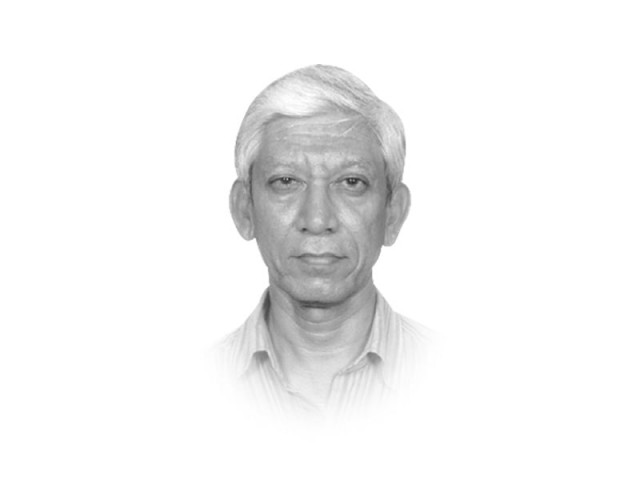Towards a jihadi politics — V
Haste in collecting booty is attributed by certain historians as a reason for defeat of mujahideen against Sikhs.

Towards a jihadi politics — V
Initially it was the aristocrats, rulers of princely states, and even commoners who gave donations — chanda — to wage a jihad. Once it was launched with the help of Pathan tribal sardars of the north-west, the latter invested in it with the hope of an almost automatic recovery in the shape of maal-e-ghanimat. In fact, the haste of collecting the booty has been attributed by certain historians as one big reason for the defeat of the mujahideen in the battles against Sikhs. In the later period of the jihad, when the wait for a victorious war with its attached rewards became too long and the soldiers demanded to be paid, Syed Ahmad even borrowed money on interest — something completely unacceptable according to conventional religious thinking.
However, what sealed the fate of jihad was Syed Ahmad’s demand of ushr — tithe — from the Pathan sardars. The local mullahs, who traditionally used to receive this religious tax, simply refused to accept Syed Ahmad’s right to demand or collect it as well as his claim of a status that allowed him such a right. This difference of interpretation between Syed Ahmad and the traditional religious clergy of the tribal Pathan society has great significance because it brings out a question which is arguably at the root of our societal crisis: who has the divine authority to interpret religious teachings according to the demands of the modern times?
Syed Ahmad obviously thought that as the imam and the amirul momineen he had this authority. But his claim — which could not have been based on an unquestionable divine decree — was fiercely contested. This fact was an indication of the coming times, when the introduction of public education, the highly enhanced role of the printed word and the greatly improved means of communication and livelihood encouraged many individuals to claim the right to have their own interpretation and to base their call for collective action on such interpretation. Not only did this situation give rise to a proliferation of religious sects, but also to ‘reform’, ‘developmental’ and ‘political’ movements such as Aligarh, Deoband, Ahmadiya, Khaksar, Jamaat-e-Islami and so on, not to mention individual saviours of various kinds. The dynamics of the situation led to a terrible war of fatwas among those purveying clashing interpretations, declaring each other out of the pale of Islam and even fit to be killed.
The matter of who is a Muslim takes on a fundamental importance once religion becomes the basis of the politics of identity and jihad. Syed Ahmad’s decision to wage a jihad against Muslims of Pathan origin, who refused to follow him or accept the status that he had given himself, seems a very daring one in this background. Essentially, it claimed a right for a group of Muslims to decide about the religious standing of other Muslims. Deviating from the lived tradition of accepting as a Muslim anyone who claimed to be one, it introduced a ‘principle’ — a great source of fitna or widespread trouble given the technologies of the modern era — that there should be an authority which would decide about the religious beliefs of others and, indeed, whether they have a right to live.
The apparent general acceptance of this ‘principle’ quickly gave rise to a categorisation of the Muslim population of the northern subcontinent between nasli and asli mussalmans — those who are Muslim only in name, as a result of the accident of birth, and those who claim to be somehow ‘better’ Muslims and who feel that they can categorise. Leaders of Deoband, Tableeghi Jamaat, Jamaat-e-Islami and all such movements have taken it upon themselves to decide who should be put in which category and to give them a choice of becoming ‘better’ Muslims, according to the prescription of each one of them, or else. As we have learned, at a great and tragic human cost, this has been a sure recipe for disaster. The jihadi leaders of today have little doubt in their minds that anyone who does not join them is fit to be blown up or butchered.
All this, and much else besides, can be shown to have had a clear purpose of jealously guarding the interests of the so-called asli mussalmans — another term for the upper-caste Muslims — as against the new inspirations of the local converts. The trajectory the Muslim identity politics of the subcontinent has taken in the past 150 years or more shows two distinct trends: one led by maulvis of different hues, and the other by ‘modernist’ cultural and political leaders of various kinds. Both have firmly taken a stand against the emancipation of the local, imperfect Muslims as equal, unstigmatised citizens of a modern, democratic state. It is a fact that both these trends have world views with many common features: veneration of invaders and conquerors, glorification of war, warriors and war machines, acknowledgement of a higher status of the ‘high-born’ and the fate of the ‘low-born’ to have to follow them, an unrealistic sense of being a part of a Muslim ‘ummah’ beyond the borders of nation states, and a rigid belief in taking guidance from religious edicts that guided politics and society in a distant and totally different situation.
The common world view between these two trends seems to be responsible for the lack of an effective resistance against the destructive jihadi politics of our times.
Published in The Express Tribune, August 13th, 2011.













COMMENTS
Comments are moderated and generally will be posted if they are on-topic and not abusive.
For more information, please see our Comments FAQ